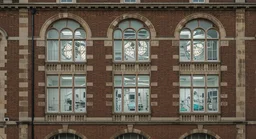Washington University Tackles Kidney Disease with $4M NIH Grant to Study Podocyte Mechanobiology
23 views
Chronic kidney disease, a silent yet relentless adversary, shadows the lives of an estimated 37 million Americans, often progressing with little warning until its grip tightens into irreversible damage. For many, the diagnosis is a life sentence, with no cure in sight. But at Washington University in St. Louis, a team of researchers is embarking on a groundbreaking journey, fueled by a $4 million grant from the National Institutes of Health, to illuminate a path toward hope. Their focus? The enigmatic podocytes—specialized kidney cells that serve as gatekeepers in the body’s intricate filtration system.
Unlocking the Secrets of Podocyte Mechanobiology
At the heart of this ambitious endeavor lies a profound question: how do mechanical forces shape the health and vulnerability of podocytes? These cells, though microscopic, play a towering role in kidney function, forming a crucial barrier that filters waste from the blood while retaining essential proteins. When podocytes falter, as they do in conditions like Alport syndrome, the consequences can be devastating, leading to protein leakage, scarring, and eventual kidney failure.

Alport syndrome, a rare genetic disorder, serves as the focal point of this study. The disease disrupts the structural integrity of the glomerular basement membrane—a key component of the kidney’s filtration unit—leaving podocytes under siege. Over time, this cellular stress erodes their ability to function, setting off a cascade of damage. By zeroing in on the mechanical forces at play, the researchers aim to uncover not only the vulnerabilities of these cells but also the resilience they may harbor.
To achieve this, the team is turning to advanced imaging technologies, including super-resolution microscopy, which offers an unprecedented view of podocyte structures at the nanoscale. This cutting-edge approach allows scientists to observe how these cells respond to mechanical stress in real time, peeling back layers of complexity that have long obscured potential therapeutic targets.
“Understanding the mechanobiology of podocytes is like solving a puzzle where every piece represents a force, a structure, or a biochemical signal,” one of the lead researchers explained. “Our goal is to see the whole picture, to understand how these elements interact, and ultimately to find ways to preserve podocyte health or repair injury.”
A New Horizon for Kidney Disease Research
The implications of this research stretch far beyond Alport syndrome. Chronic kidney disease, in its many forms, shares a common thread: the progressive loss of podocyte function. By deciphering the mechanical cues that govern these cells, the team hopes to lay the groundwork for therapies that could halt or even reverse kidney damage.
This marks a significant shift in kidney disease research, which has traditionally focused on biochemical pathways and genetic mutations. While these avenues have yielded important insights, they have also left gaps in our understanding of how physical forces influence cellular health. The concept of mechanobiology—a field that explores how mechanical forces and cellular structures interact—offers a fresh perspective, one that could redefine treatment strategies.
The researchers are particularly optimistic about the translational potential of their findings. If they can identify specific mechanical factors that contribute to podocyte injury, these insights could inform the development of drugs, biomaterials, or even regenerative therapies aimed at restoring kidney function. For patients with Alport syndrome and other kidney conditions, this could mean a future where disease progression is no longer inevitable.
Beyond the Lab: A Broader Perspective
The urgency of this work cannot be overstated. Chronic kidney disease is not merely a medical challenge; it is a societal one, disproportionately affecting marginalized communities and placing immense strain on healthcare systems. Dialysis, the most common treatment for end-stage kidney disease, is both physically taxing for patients and financially burdensome. The prospect of therapies that could intervene earlier in the disease process offers a glimmer of relief—not only for individuals but for the broader healthcare landscape.
Moreover, this research underscores the power of interdisciplinary collaboration. By bringing together experts in cell biology, mechanical engineering, and advanced imaging, the team is breaking down silos that have long hindered innovation. This integrative approach serves as a model for tackling other complex diseases, where the interplay of physical and biological factors remains poorly understood.
As the study progresses, the hope is that its findings will ripple outward, inspiring further research and investment in kidney health. While the road ahead is long, the commitment of these scientists—and the support of the NIH—signals a turning point in the fight against chronic kidney disease.
In the end, the story of podocytes is not just a tale of cellular mechanics; it is a testament to human ingenuity and resilience. By delving into the microscopic world of these cells, the researchers at Washington University are, in essence, exploring the very foundations of life itself. And in doing so, they are offering a lifeline to millions who live under the shadow of kidney disease, daring to imagine a future where hope is not just a possibility but a promise.





























